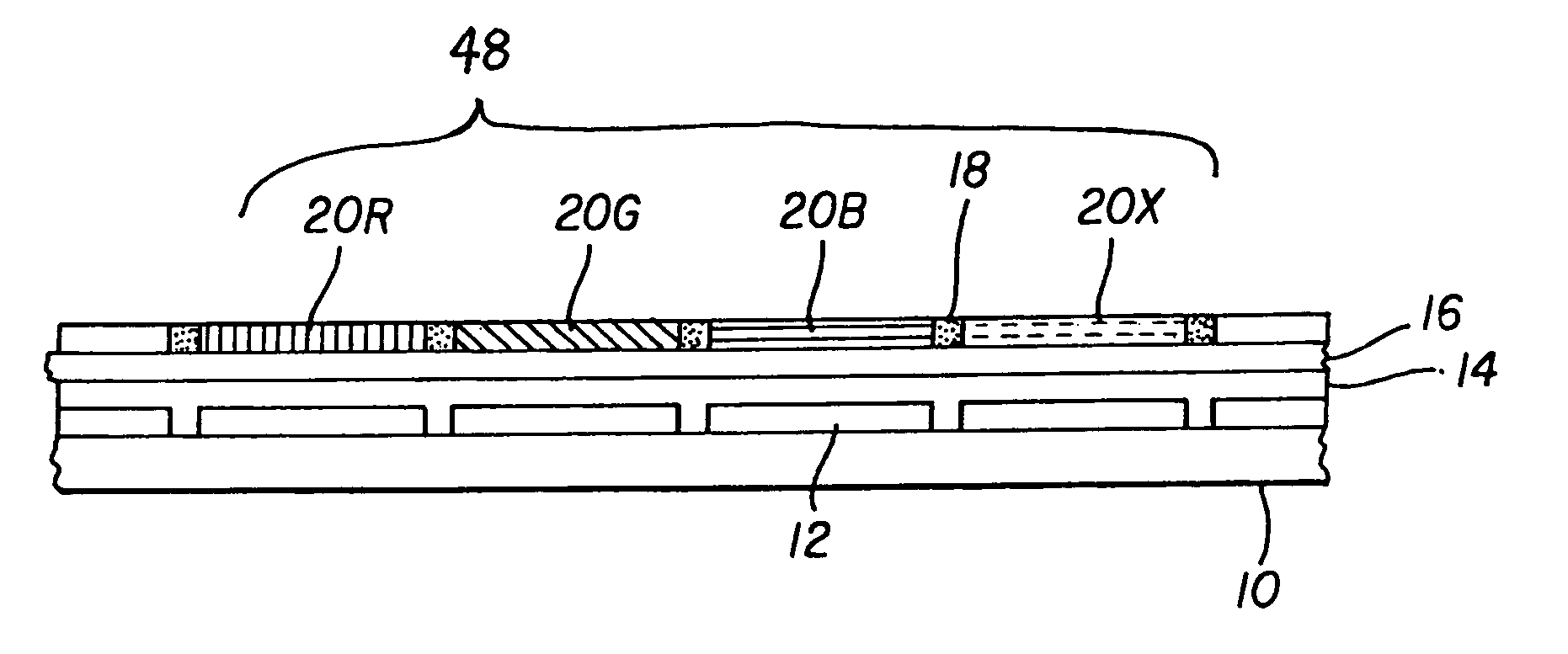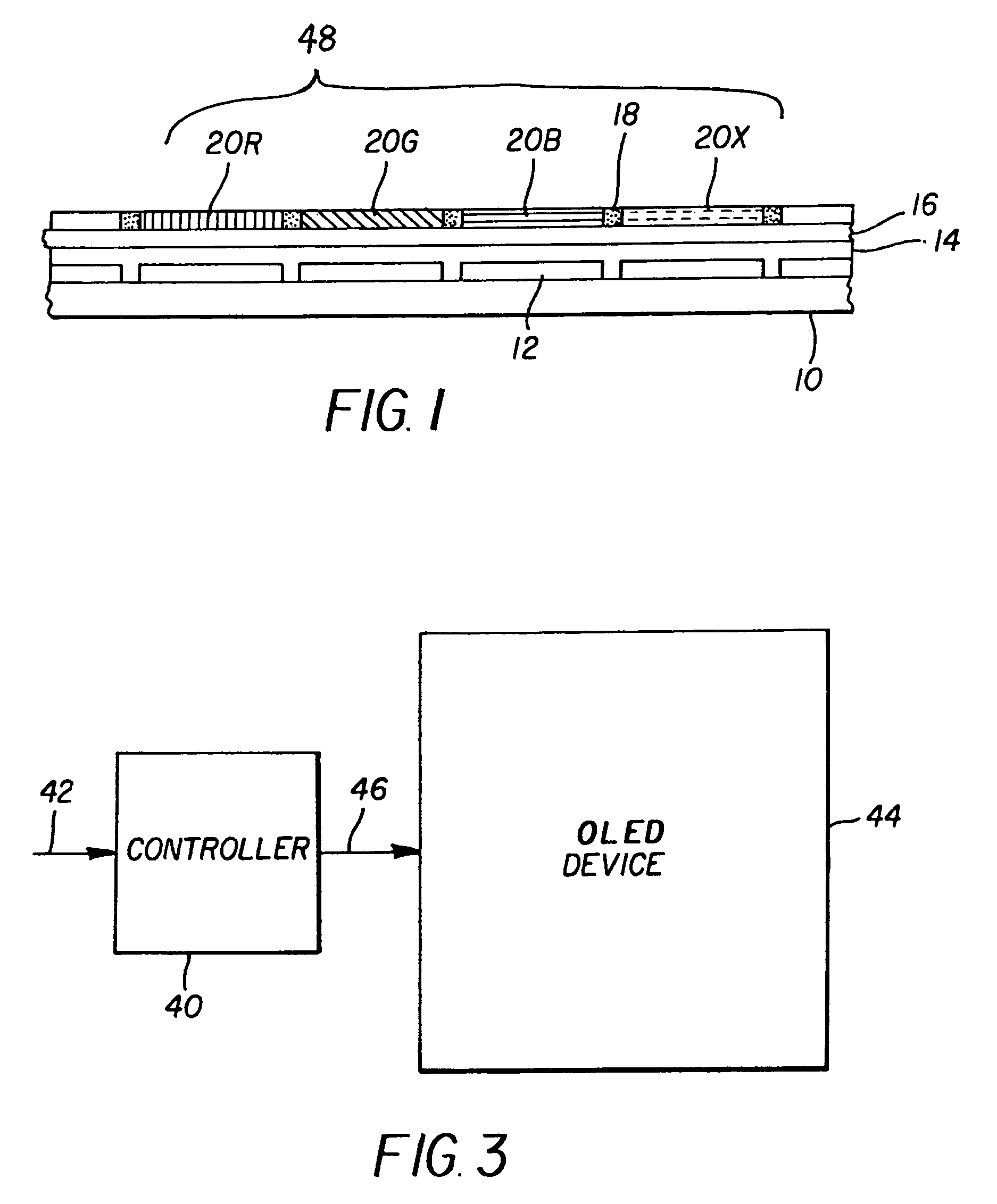Color OLED device having improved performance
a technology of color display and oled, which is applied in the direction of solid-state devices, electric lighting sources, electric light sources, etc., can solve the problems of requiring significantly more manufacturing steps, and not being able to match the peak of the spectral transmission function of the color filter, so as to improve the power efficiency and display life without reducing the luminance of the display. , the effect of expanding the color gamu
- Summary
- Abstract
- Description
- Claims
- Application Information
AI Technical Summary
Benefits of technology
Problems solved by technology
Method used
Image
Examples
Embodiment Construction
[0020]The present invention is directed to a color OLED device having one or more pixels, at least one pixel comprising four or more light-emitting elements, each light-emitting element comprising one or more layers of electroluminescent organic material producing a broadband light having a variable frequency-dependent luminous efficacy emission spectrum, and each light-emitting element further comprising a filter for filtering the broadband light and emitting a different color of light. As is known, luminous efficacy of a light source is dependent upon the radiant emission of the light source in combination with the response sensitivity of the human visual system. In the present invention, the different colors of light emitted by three of the light-emitting elements specify a first color gamut of the OLED device, and an additional one or more of the light-emitting elements emit at least one additional different color of light, and the frequency range of the filter of the additional...
PUM
 Login to View More
Login to View More Abstract
Description
Claims
Application Information
 Login to View More
Login to View More - R&D
- Intellectual Property
- Life Sciences
- Materials
- Tech Scout
- Unparalleled Data Quality
- Higher Quality Content
- 60% Fewer Hallucinations
Browse by: Latest US Patents, China's latest patents, Technical Efficacy Thesaurus, Application Domain, Technology Topic, Popular Technical Reports.
© 2025 PatSnap. All rights reserved.Legal|Privacy policy|Modern Slavery Act Transparency Statement|Sitemap|About US| Contact US: help@patsnap.com



